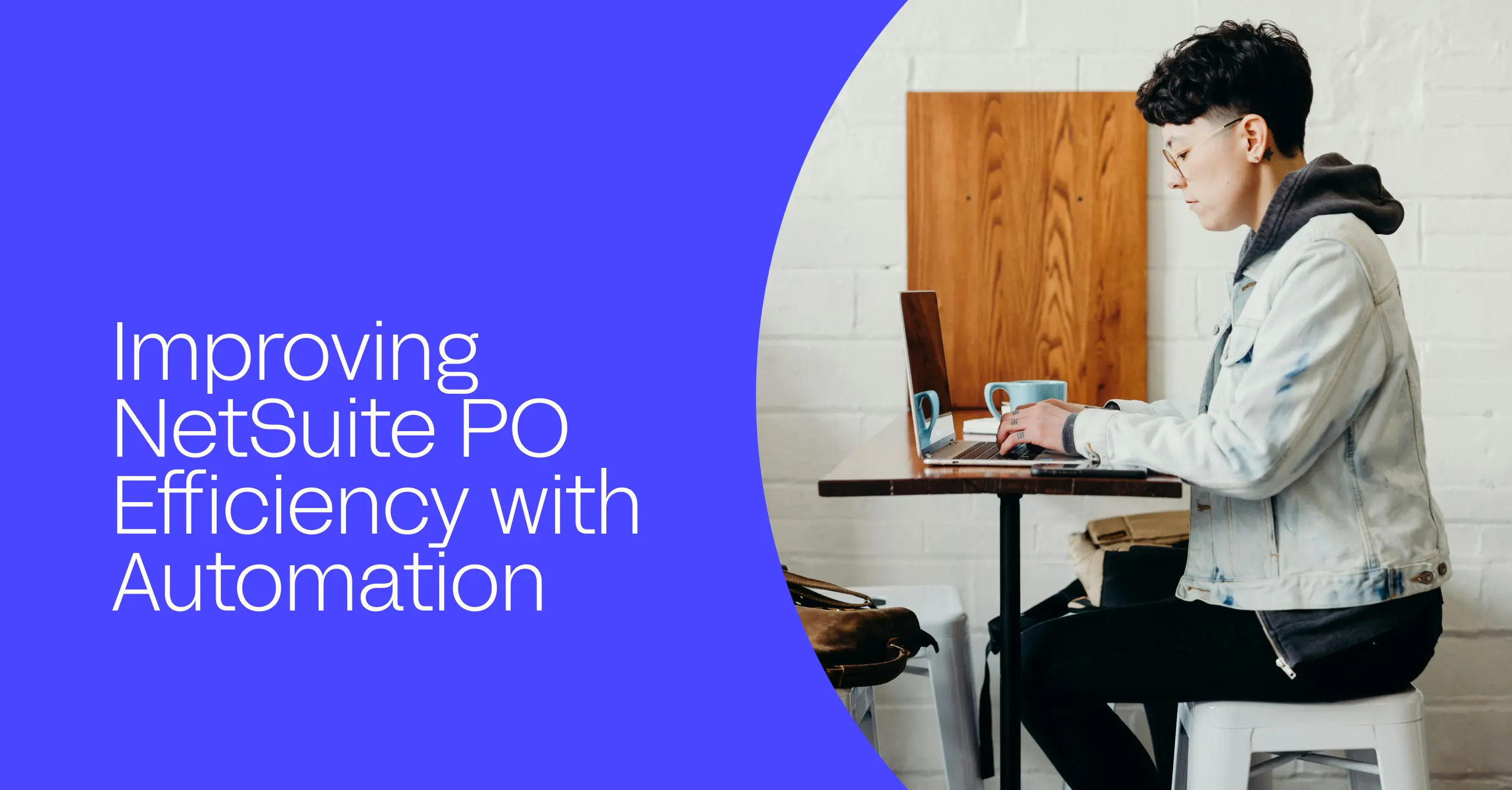Efficiency and accuracy are key to success when processing invoices. Traditionally, invoice processing has been time-consuming and error-prone, relying heavily on manual data entry and verification. However, with paper-based invoices fading away and the rise of artificial intelligence (AI), the landscape of invoice processing is changing rapidly.
AI has emerged as a powerful tool for automating invoice processing, offering a range of benefits that can help organizations improve efficiency, reduce costs, and enhance accuracy. By leveraging technologies such as machine learning, natural language processing (NLP), and optical character recognition (OCR), AI-powered invoice processing systems can automatically extract and validate invoice data, relieving accounts payable departments from the heavy burden of manual work and the risk of errors.
The current landscape of invoice processing
Despite the potential of digital invoicing, many accounts payable departments are still grappling with the inefficiencies and limitations of traditional processes. The reliance on manual data entry and verification, which are prone to errors, leads to long processing times and a lack of scalability. These issues can ripple effect, causing delayed payments, strained vendor relationships, and increased operational costs.
With AI-powered invoice processing, finance teams are empowered with real-time insights into invoice status and payment schedules. This enables them to optimize working capital and forecast future cash requirements accurately, thus making them feel more confident and in control.
The need for change
As businesses expand their supplier networks and the volume of invoices grows, the need for a more intelligent and adaptable approach to invoice processing becomes increasingly apparent. Finance teams must optimize their accounts payable processes to improve financial efficiency and accuracy and enable strategic decision-making.
The expansion of supplier networks has led to a proliferation of invoice formats and structures, ranging from standard PDFs to custom spreadsheets. This diversity presents a significant challenge for traditional invoice processing methods, which often struggle to extract and normalize data from disparate sources.
At the same time, the pressure to streamline accounts payable processes has never been greater. Organizations seek ways to reduce manual intervention, minimize errors, and accelerate invoice processing cycles. They also want to improve visibility and control over their financial operations with real-time insights into invoice status, payment schedules, and cash flow forecasts.
AI is the solution to these challenges. Its intelligent data extraction, validation, and analysis automation can transform invoice processing, making it faster, more accurate, and more scalable.
Moreover, AI-powered invoice processing systems can adapt to each organization’s unique needs and requirements, providing the flexibility and adaptability necessary to navigate the ever-changing business landscape.
Delving into AI-driven invoice processing
OCR extracts relevant information such as vendor names, invoice numbers, amounts, and line item details from invoices. This unstructured data is then converted into a structured format suitable for further processing and bill creation.
Once the data is extracted, the system can automatically generate a bill, eliminating the need for manual data entry. This streamlines the bill creation process and reduces the risk of errors.
Machine learning algorithms then validate and classify the extracted data based on predefined rules and historical patterns. These algorithms can learn from past experiences and continuously improve their accuracy over time.
One of the most significant applications of machine learning in invoice processing is automated bill coding. The system can automatically assign general ledger codes to each line item on the invoice by analyzing historical data and learning from previous coding decisions.
Furthermore, NLP can be utilized to understand and analyze unstructured data, such as free-form text or invoice comments. This capability is particularly valuable for handling exceptions or discrepancies that may require human intervention, as it allows the system to interpret and route these cases to the appropriate team members for resolution.
Together, these components form the backbone of an AI-driven invoice processing workflow. The system can automatically extract and normalize data from incoming invoices, validate it for accuracy and completeness, and seamlessly integrate it with existing financial systems, such as ERP or accounting software. This end-to-end automation streamlines the entire invoice processing cycle, from receipt to payment to reconciliation, reducing manual touchpoints and minimizing the risk of errors.
But the real power of AI lies in its ability to learn and improve continuously. Through feedback loops and self-learning capabilities, an AI-powered invoice processing system can adapt to each organization’s unique business rules and requirements, becoming smarter and more efficient. This adaptability is crucial in today’s dynamic business environment, where change is the only constant.
The benefits of AI in invoice processing
The benefits of implementing AI in invoice processing are vast and impactful. The most immediate and tangible benefit is the increase in accuracy and efficiency. By automating data extraction and validation, AI can eliminate the manual errors and inconsistencies that often plague traditional invoice processing methods. This reduces the risk of costly mistakes and ensures that general ledger entries are accurate and compliant with accounting standards.
Additionally, AI can automatically match invoices with purchase orders, streamlining the two-way match process. This frees up valuable time for accounts payable staff to focus on more strategic tasks, such as vendor management, cash flow analysis, and financial reporting.
In addition to improving accuracy, AI can significantly reduce invoice processing times and costs. Organizations can accelerate invoice approval cycles by streamlining the end-to-end workflow and minimizing manual intervention, ensuring timely vendor payments and optimizing working capital management. This increased efficiency can also help organizations scale their operations more effectively, handling growing volumes of invoices without needing additional headcount.
Another key benefit of AI in invoice processing is enhanced compliance and risk management. By automating data validation and ensuring adherence to corporate policies and regulations, AI can help organizations avoid costly penalties and reputational damage. Advanced AI systems can leverage Machine Learning algorithms to detect and prevent fraudulent activities, such as duplicate invoices or suspicious payment patterns, providing additional security and control.
AI also enables improved visibility and control over the entire invoice processing cycle. With real-time tracking and monitoring capabilities, finance teams can easily track the status of each invoice, from receipt to payment and reconciliation, and identify bottlenecks or exceptions that require attention.
Comprehensive reporting and analytics features provide valuable insights into key performance indicators, such as invoice processing times, vendor performance, and cash flow forecasts, empowering organizations to make data-driven decisions and optimize their financial operations.
Finally, AI offers unparalleled scalability and flexibility, enabling organizations to adapt to changing business needs and requirements. Whether dealing with increasing invoice volumes, new supplier onboarding, or changes in invoice formats and structures, an AI-powered system can easily handle these challenges, providing a future-proof solution that grows with the business.
Adopting AI in invoice processing
While the benefits of AI in invoice processing are clear, adopting this technology requires careful planning and execution.
The first step is to assess organizational readiness, evaluate current invoice processing workflows, and identify areas for improvement and automation. This assessment should involve key organizational stakeholders, including accounts payable, procurement, and IT, to comprehensively understand existing processes and pain points.
Once the assessment is complete, the next step is to choose the right AI solution. With a growing number of vendors offering AI-powered invoice processing systems, it’s important to carefully evaluate each option based on functionality, ease of use, integration capabilities, and scalability. Look for a solution that seamlessly integrates with existing financial systems and provides a user-friendly interface for accounts payable staff and suppliers.
Change management and user adoption are also critical to the success of any AI implementation. Employees may hesitate to embrace new technologies, particularly if they feel their jobs are threatened. To ensure a smooth transition, it’s important to communicate the benefits of AI clearly and provide adequate training and support.
Encouraging user feedback and continuous improvement can foster a culture of innovation and collaboration, driving long-term success.
Conclusion
The transformative potential of AI in invoice processing is clear. By automating and streamlining accounts payable operations, AI can help organizations achieve unprecedented efficiency, accuracy, and control. From reducing manual errors and processing times to enhancing compliance and risk management, the benefits of AI are far-reaching and compelling.
As the business landscape continues to evolve, the future of accounts payable lies in embracing AI and other emerging technologies. Organizations that adopt AI-powered invoice processing systems today will be well-positioned to navigate the challenges of tomorrow, driving innovation, growth, and competitive advantage.
Of course, implementing AI is not a silver bullet. It requires careful planning, execution, and ongoing optimization to realize its full potential. However, the rewards can be significant for organizations willing to invest in this technology and embrace change.
AI is revolutionizing invoice processing, offering a powerful solution to the challenges faced by accounts payable departments today. As the technology continues to evolve and mature, the possibilities for accounts payable are vast, with AI a critical component of any forward-thinking financial strategy.
FAQs
How do you use AI for invoicing?
By leveraging AI technologies such as optical character recognition (OCR) and machine learning, you can digitize invoices, extract relevant data, validate information, and route invoices for approval. AI can also help detect discrepancies, fraud, or duplicates, ensuring accuracy and compliance.
What is AI invoice processing?
AI invoice processing refers to the use of artificial intelligence technology to automate and streamline invoice handling. It involves using AI, intelligent OCR software, and prebuilt invoice processing models to extract and validate data, minimize errors, and speed up invoice processing. By harnessing AI, businesses can achieve faster, more efficient invoice processing.
Can invoice processing be automated?
Yes, invoice processing can be fully automated from start to finish. Automated invoice processing involves digitizing incoming invoices, extracting relevant data using OCR and AI, matching invoices with purchase orders and receipts, routing them for approval based on predefined rules, and integrating the data into accounting systems for payment processing.
What is AI in billing?
AI in billing refers to artificial intelligence technologies to automate the entire invoice processing workflow. This includes using AI and machine learning algorithms to digitize invoices, extract relevant data, validate information against purchase orders and receipts, detect discrepancies or fraud, route invoices for approvals based on predefined rules, and seamlessly integrate the data into accounting systems for payment processing.
How do I create an automated invoice processing workflow?
To create an automated invoice processing workflow, digitize all incoming invoices using scanning solutions or email capture. Then, deploy OCR and AI technologies to extract relevant data. Establish rules to validate the extracted data against purchase orders and receipts, and set up an automated approval workflow based on predefined criteria. Integrate the validated invoice data with your accounting system for seamless payment processing. Finally, continuously monitor and optimize the automated workflow to identify bottlenecks and improve efficiency over time.


